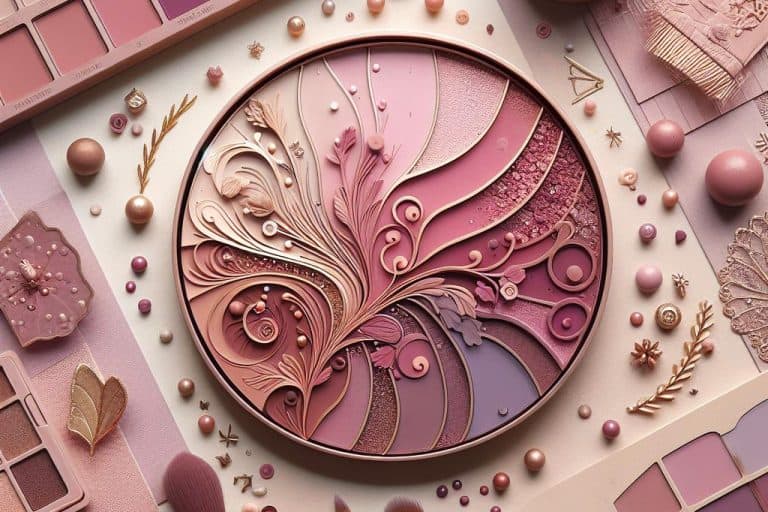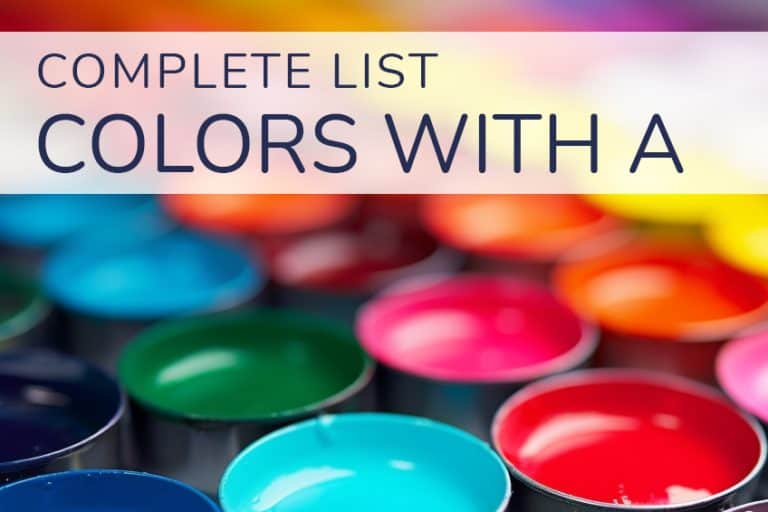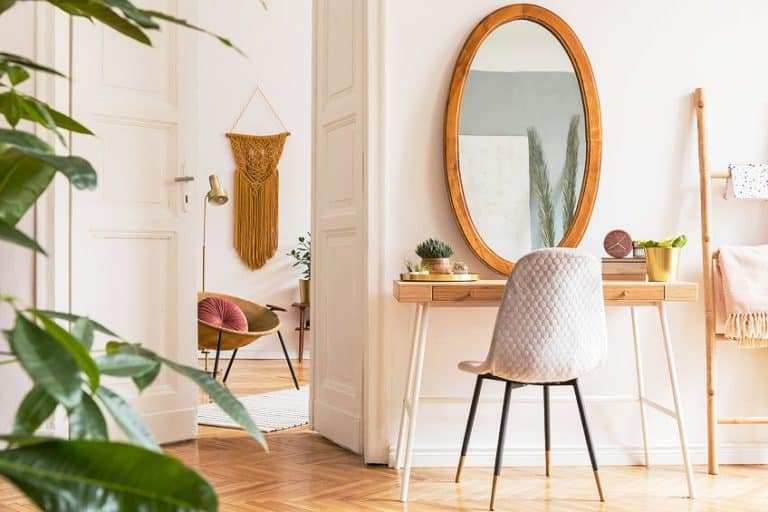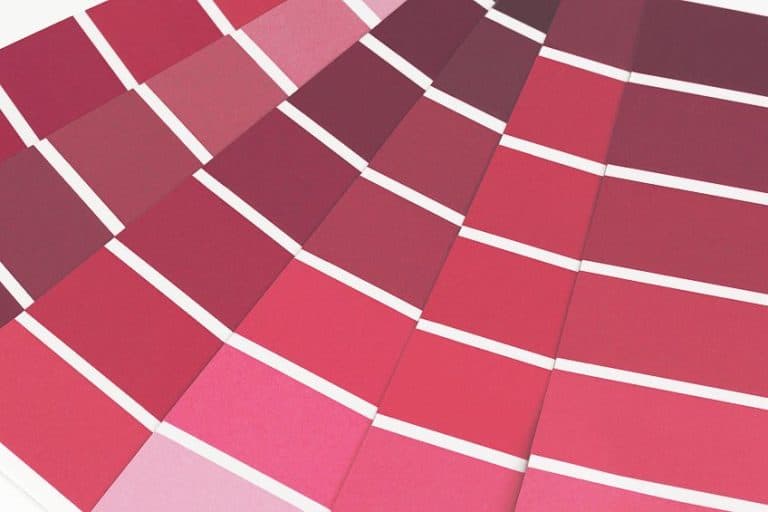Sage Green Color – Using a Sage Color Palette in Design
With so many shades of green available, it can be difficult to know where to begin when having to choose one. Green has a considerable history behind it, and the sage green color has a part to play in it. So, to get better acquainted with the color, let us start with what is sage green, and work our way through to how you can use it in your next home design project.
What Is Sage Green?
The sage green color can be described as a silvery grayish-green, with a yellow undertone. The color is similar to the dry leaves of its namesake, the sage culinary herb. The leaves themselves have a silvery-gray appearance, which provides a muted and earthy feel. This makes it the perfect neutral color alternative to include designs, whether that be in home decor or for the exteriors of your home. Like all colors, there are a few different variants of this sage green hue that we will discuss below.
| Sage Green Shade | Sage Green Hex Code | CMYK Code (%) | RGB Code | Color |
| Sage Green | #b2ac88 | 0, 3, 24, 30 | 178, 172, 136 |
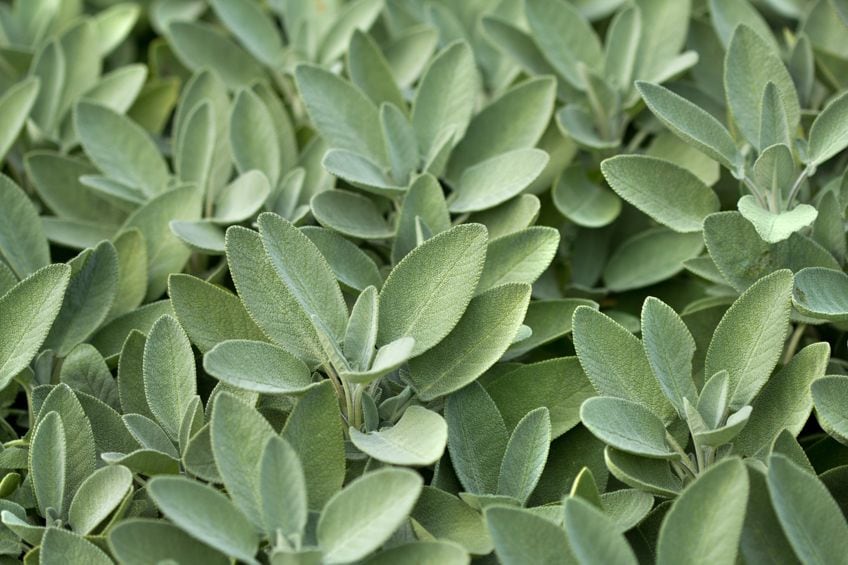
Sage Green: A Brief History
The sage plant has been around forever, and therefore, sage green has also been around for a long time. However, generally, green is a color with quite a history, which begins with the Ancient Egyptians and Greeks. However, in later years, most of the green pigments that were produced and used turned out to be quite toxic.
For example, Scheele’s Green contained copper arsenite, which is a deadly component. It is believed that Napoleon Bonaparte painted his bedroom with the color, which is what eventually caused his death. Thankfully, safer, synthetic pigments were later invented and used for painting.
More recently, for many years in the mid-20th century, military flight jackets like the MA-1 bomber jacket came in sage green. Today, the sage color has become quite popular in interior design. Well-known paint brands like Sherwin-Williams, have even named sage green as their color of the year for 2022. However, sage is not only for interior design – but it has also become a fashion trend.
Sage Color Meaning
The word sage means knowledgeable or describes someone with wisdom. The sage color meaning, therefore, can also be associated with the expression of wisdom. Because it is part of the green family, it also shares many of its qualities. As a result, sage green is also associated with all things natural. The color is also linked to the following attributes.
- Relaxation
- Comfort
- Growth
- Renewal
- Freshness
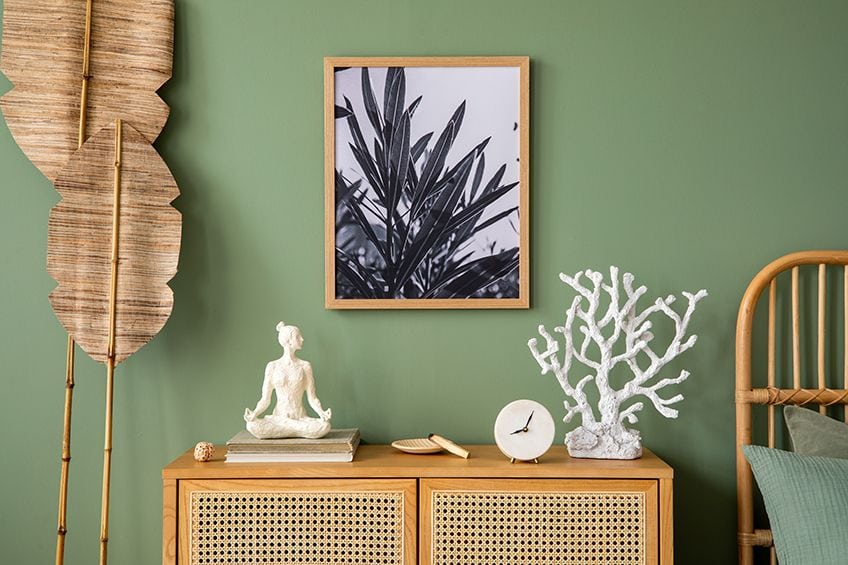
The association with nature can bring up feelings of peacefulness and security. Green is also a wonderful color that can aid in improving anxiety and depression. However, pale green colors can also signify stagnation, immaturity, and inexperience and can appear dull.
Shades of Sage Green
When working on designs, you do not have to stick to one single color, as there are a variety of different tones to create the perfect sage color palette. Colors can be identified online by their hex code, while the color codes show you what each color is made of.
The computer graphics rely on the RGB or red, green, and blue color system, while if you want to print, you need to look at the CMYK color system that involves cyan, magenta, yellow, and black.
When you compare the different sage tones below, you can note the difference in the colors that make up sage. The ryegrass and wool skein colors are both Sherwin-Williams paint colors, and artichoke is the color of the edible plant with the same name. We have also included some of the best sage green paint colors from well-known brands, including Benjamin Moore, Farrow, and Behr.
| Color Shade Name | Hex Code | RGB | CMYK (%) | Color Visualization |
| Aqua Mist | #B4D3C4 | 180, 211, 196 | 15, 0, 7, 17 | |
| Artichoke | #8F9779 | 143, 151, 121 | 5, 0, 20, 41 | |
| Autumn Sage | #AEA26E | 174, 162, 110 | 0, 7, 37, 32 | |
| Bamboo Forest | #B1A979 | 177, 169, 121 | 0, 5, 32, 31 | |
| Celery | #B4C04C | 180, 192, 76 | 6, 0, 60, 25 | |
| Cool Sage | #B0BEA4 | 176, 190, 164 | 7, 0, 14, 25 | |
| Dark Sage | #6F7259 | 111, 114, 89 | 3, 0, 22, 55 | |
| Deep Sage | #6C765B | 108, 118, 91 | 8, 0, 23, 54 | |
| Desert Sage | #A7AE9E | 167, 174, 158 | 4, 0, 9, 32 | |
| Dried Sage | #8D8E84 | 141, 142, 132 | 1, 0, 7, 44 | |
| Dusty Green | #5A896F | 90, 137, 111 | 34, 0, 19, 46 | |
| Dusty Olive | #959778 | 149, 151, 120 | 1, 0, 21, 41 | |
| Dusty Sage | #A7A794 | 167, 167, 148 | 0, 0, 11, 35 | |
| Dusty Teal | #4C9085 | 76, 144, 133 | 47, 0, 8, 44 | |
| Eucalyptus | #5F8575 | 95, 133, 117 | 29, 0, 12, 48 | |
| Fern | #63B76C | 99, 183, 108 | 46, 0, 41, 28 | |
| Forest Sage | #939F88 | 147, 159, 136 | 8, 0, 14, 38 | |
| Fresh Mint | #95E8A3 | 149, 232, 163 | 36, 0, 30, 9 | |
| Fresh Sage | #8AA38B | 138, 163, 139 | 15, 0, 15, 36 | |
| Frosted Fern | #A9AA9A | 169, 170, 154 | 1, 0, 9, 33 | |
| Frosted Sage | #C6D0C5 | 198, 208, 197 | 5, 0, 5, 18 | |
| Golden Sage | #B09E60 | 176, 158, 96 | 0, 10, 45, 31 | |
| Gray Sage | #9EA49D | 158, 164, 157 | 4, 0, 4, 36 | |
| Herbal Green | #B0CB9D | 176, 203, 157 | 13, 0, 23, 20 | |
| Herbal Sage | #D9D5C3 | 217, 213, 195 | 0, 2, 10, 15 | |
| Laurel Green | #A9BA9D | 169, 186, 157 | 9, 0, 16, 27 | |
| Leapfrog | #88915D | 136, 145, 93 | 6, 0, 36, 43 | |
| Light Sage | #BCBB9D | 188, 187, 157 | 0, 1, 16, 26 | |
| Marshland | #2F322A | 47, 50, 42 | 6, 0, 16, 80 | |
| Matte Sage | #97A288 | 151, 162, 136 | 7, 0, 16, 36 | |
| Mint Green | #98FB98 | 152, 251, 152 | 39, 0, 39, 2 | |
| Misty Sage | #D4E3A6 | 212, 227, 166 | 7, 0, 27, 11 | |
| Moorstone | #CFD1CA | 207, 209, 202 | 1, 0, 3, 18 | |
| Morning Mist | #E5EDF1 | 229, 237, 241 | 5, 2, 0, 5 | |
| Moss Green | #8A9A5B | 138, 154, 91 | 10, 0, 41, 40 | |
| Mossy Rock | #A9965D | 169, 150, 93 | 0, 11, 45, 34 | |
| Muted Green | #96D294 | 150, 210, 148 | 29, 0, 30, 18 | |
| Muted Sage | #A7A28A | 167, 162, 138 | 0, 3, 17, 35 | |
| Night Watch | #3C504F | 60, 80, 79 | 25, 0, 1, 69 | |
| Olive Green | #708238 | 112, 130, 56 | 14, 0, 57, 49 | |
| Olive Mist | #94A88B | 148, 168, 139 | 12, 0, 17, 34 | |
| Pale Olive | #C2C29A | 194, 194, 154 | 0, 0, 21, 24 | |
| Pale Sage | #ACBDA1 | 172, 189, 161 | 9, 0, 15, 26 | |
| Pastel Avocado | #B1C086 | 177, 192, 134 | 8, 0, 30, 25 | |
| Purple Sage | #76697E | 118, 105, 126 | 6, 17, 0, 51 | |
| Rustic Sage | #9EA06F | 158, 160, 111 | 1, 0, 31, 37 | |
| Sage | #BCB88A | 188, 184, 138 | 0, 2, 27, 26 | |
| Sage (Pantone) | #8F916B | 143, 145, 107 | 1, 0, 26, 43 | |
| Sage Blue | #6E9DAF | 110, 157, 175 | 37, 10, 0, 31 | |
| Sage Gray | #B5BDA5 | 181, 189, 165 | 4, 0, 13, 26 | |
| Sage Green | #B2AC88 | 178, 172, 136 | 0, 3, 24, 30 | |
| Sage Stone | #757F66 | 117, 127, 102 | 8, 0, 20, 50 | |
| Sagebrush Green | #567572 | 86, 117, 114 | 26, 0, 3, 54 | |
| Scarlet Sage | #9D202F | 157, 32, 47 | 0, 80, 70, 38 | |
| Sea Sage | #8FB29B | 143, 178, 155 | 20, 0, 13, 30 | |
| Seafoam Aqua | #2B4F69 | 43, 79, 105 | 59, 25, 0, 59 | |
| Seafoam Green | #9FE2BF | 159, 226, 191 | 30, 0, 15, 11 | |
| Secret Garden | #4F523A | 79, 82, 58 | 4, 0, 29, 68 | |
| Sedona Sage | #686D6C | 104, 109, 108 | 5, 0, 1, 57 | |
| Silver Fern | #BBAA7E | 187, 170, 126 | 0, 9, 33, 27 | |
| Silver Sage | #D3D5C5 | 211, 213, 197 | 1, 0, 8, 16 | |
| Soft Mint | #D3EFDE | 211, 239, 222 | 12, 0, 7, 6 | |
| Soft Sage | #BDBDB1 | 189, 189, 177 | 0, 0, 6, 26 | |
| Spanish Moss | #675D53 | 103, 93, 83 | 0, 10, 19, 60 | |
| Sprout | #C4D79B | 196, 215, 155 | 9, 0, 28, 16 | |
| Stone Green | #68926D | 104, 146, 109 | 29, 0, 25, 43 | |
| Succulent | #5E9B86 | 94, 155, 134 | 39, 0, 14, 39 | |
| Taiga | #768078 | 118, 128, 120 | 8, 0, 6, 50 | |
| Teal Green | #006D5B | 0, 109, 91 | 100, 0, 17, 57 | |
| Thicket | #A1A07E | 161, 160, 126 | 0, 1, 22, 37 | |
| Wet Grass | #79BB2E | 121, 187, 46 | 35, 0, 75, 27 | |
| Wet Leaf | #B9A023 | 185, 160, 35 | 0, 14, 81, 27 | |
| Whispering Pine | #C8CAB5 | 200, 202, 181 | 1, 0, 10, 21 | |
| Willow Grove | #69755C | 105, 117, 92 | 10, 0, 21, 54 |

A variety of colors that originate from a single color like sage are known as a monochromatic sage color palette, which works well with each other. Another sage color scheme or combination that works well is an analogous color combination, where sage is paired with other colors that are close to it on the color wheel. Other colors that go with sage green include muted reds, purples, blues, taupe, and gold.
What Colors Make Sage Green Acrylic Paint?
Sage green is a calming and popular color, but it is not often you find it on a paint palette. You can purchase the color already in a paint tube, but there are also ways to mix the color yourself. You can do this by using the primary color or starting with a shade of green. Below we have outlined the best methods for creating sage paint color.

Using Primary Colors to Make Sage Green
Create your own color palette or chart and experiment with different proportions of paint, to see what colors you can get. You can start by using two parts yellow paint, with one part blue paint, which should give you a green color. When experimenting, consider creating a warm and cool selection of paint colors and white, which should provide a broader range of paint colors for you to work with.
To the green paint you have already mixed, add a very small amount of red, until you reach a color close to sage. Since you are mixing all three primary colors, this will be what creates that green-brown or green-gray color.
Be careful when adding the red, as too much will overpower the mix and you will not get the sage color you are looking for. You can mix in tiny amounts of white paint to lighten the color, or blue paint to darken it. You can also mix your basic green color as we have discussed, and then try adding gray paint. Again, you might have to experiment with proportions to find the best sage color. With this method, because you are starting from scratch you can make a sage green hue with red, green, or blue undertones. This method gives you a greater range of creative opportunities,
Using a Shade of Green to Make Sage
Choose a shade of green you want, for example, mint, olive, or camo green. You can then add a tiny amount of red to help get closer to a sage green color. If it appears to be too brown, try adding a little more green. You can also create a sage green with yellow undertones by using a brighter green as your base.
If you used a green-blue color, to begin with, you can make the color warmer by adding orange. If the blue was more yellow, try adding a cool magenta or red-purple, which will dull the green. You can then add white to brighten the color or small amounts of black or more blue to darken it.
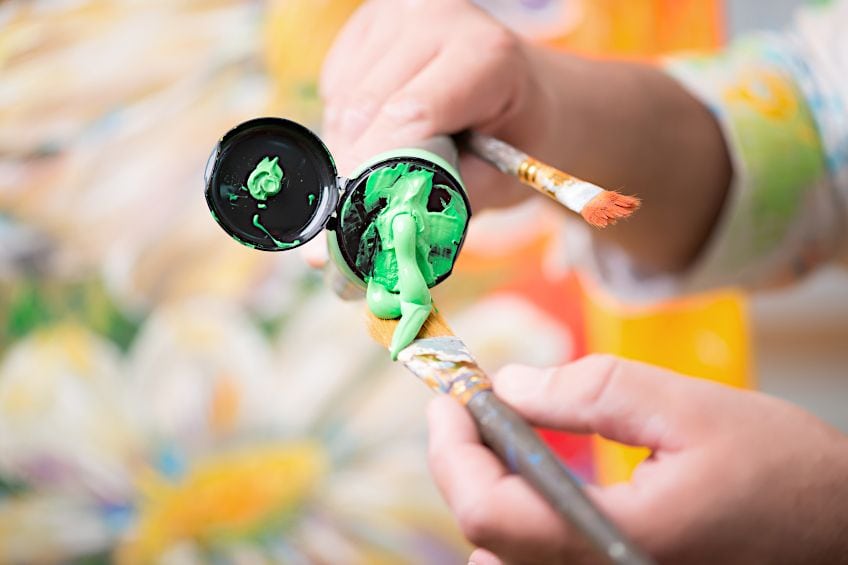
Some may blend paints another way, by first choosing a green and then adjusting its value, by making it lighter or darker and then adjusting the color saturation or intensity by adding red, and then making final adjustments. Whatever method you use, once you get familiar with paint’s colors and how they interact, you can experiment even further with combinations.
Designing With Sage Green
Sage tones are generally soothing and can be used to create a relaxing atmosphere in the home. Sage as a color for furnishings in your home offers significant versatility. You can use the sage color as your main base color or include it as an accent color. Using sage green in your home can create a deep sense of serenity, this is why it is such a popular choice in interior design right now. From cabinetry and throw pillows to impactful feature walls, sage has a lot to offer your home.
Colors look different on a screen than in reality, so it is best to always get samples of the paint before commencing.
Using Shades of Sage Green in the Bedroom
You can easily use the sage green color as a neutral, as there are many different tones. You can use lighter or darker shades to set the mood for the rest of the room. Sage also goes well with shades like white and gray. Consider bringing in different patterns and textures to add more depth. For example, a bedroom with sage walls and a white ceiling. The bed can have layers of white and sage by adding a white duvet, sage-patterned cushions, and a sage color throw. Add in a patterned sage rug.
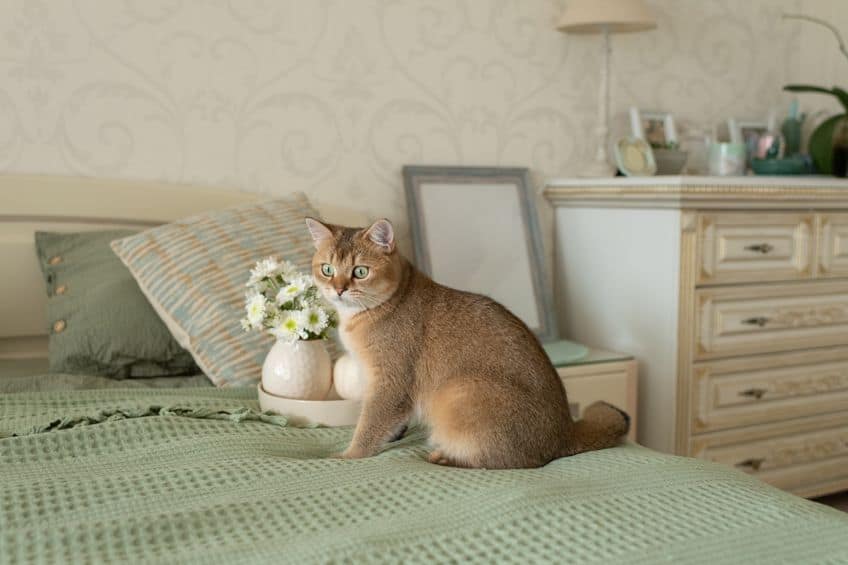
Sage Green Kitchen and Bathroom Designs
Muted sage colors can also work nicely in the kitchen, consider sage kitchen cabinets if you are looking for a timeless look. You can blend the sage color with other neutral shades like a white marble to create a crisp and clean space. Sage green also goes very well with other natural shades, so consider mixing in some wood tones or some natural brass fittings. Since sage is calming, you can create a beautifully tranquil bathroom space.
Consider using textures, like sage tiles, and again, combine it with other calming tones and natural dark woods for a more natural feel.
How to Use Sage Green Shades in the Living Room Space
Instead of using a neutral sage color palette, you can also add a pop of color. For the living room, you can still use a base, for example, white walls and sage-colored couches, but bring in some shades of blue and pink to add more interest. Sage is also an ideal nursery room color, it is gender-neutral and since it can act like a neutral and is a soft color, you will most likely not have to change it any time soon.

You can feel confident when using sage green for any type of design. The color is perfect for adding a touch of nature to any room and adding a calming and welcoming atmosphere. And let us not forget that sage green is the color trend for this year, so it should definitely be on your list.
Frequently Asked Questions
What Colors Make Sage Green?
When mixing a sage green color paint, you will need to first create green. This is achieved by blending blue and yellow. To this, you add tiny amounts of red, and then adjust the proportions to create a sage green color.
Is Sage Green a Cool or Warm Color?
Sage green is muted and has gray undertones. However, depending on what type of blue and red you use, the sage green color can be either cool or warm.
What Colors Go With Sage Green?
Since sage green can be used as a neutral color, it can also go with virtually any other color. It can be paired with other shades of green, but it can also go with other neutrals, earth tones as well as muted pinks and blues.
In 2005, Charlene completed her Wellness Diplomas in Therapeutic Aromatherapy and Reflexology from the International School of Reflexology and Meridian Therapy. She worked for a company offering corporate wellness programs for a couple of years, before opening up her own therapy practice. It was in 2015 that a friend, who was a digital marketer, asked her to join her company as a content creator, and this is where she found her excitement for writing.
Since joining the content writing world, she has gained a lot of experience over the years writing on a diverse selection of topics, from beauty, health, wellness, travel, and more. Due to various circumstances, she had to close her therapy practice and is now a full-time freelance writer. Being a creative person, she could not pass up the opportunity to contribute to the Art in Context team, where is was in her element, writing about a variety of art and craft topics. Contributing articles for over three years now, her knowledge in this area has grown, and she has gotten to explore her creativity and improve her research and writing skills.
Charlene Lewis has been working for artincontext.org since the relaunch in 2020. She is an experienced writer and mainly focuses on the topics of color theory, painting and drawing.
Learn more about Charlene Lewis and the Art in Context Team.
Cite this Article
Charlene, Lewis, “Sage Green Color – Using a Sage Color Palette in Design.” Art in Context. December 13, 2022. URL: https://artincontext.org/sage-green-color/
Lewis, C. (2022, 13 December). Sage Green Color – Using a Sage Color Palette in Design. Art in Context. https://artincontext.org/sage-green-color/
Lewis, Charlene. “Sage Green Color – Using a Sage Color Palette in Design.” Art in Context, December 13, 2022. https://artincontext.org/sage-green-color/.




